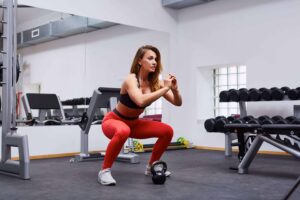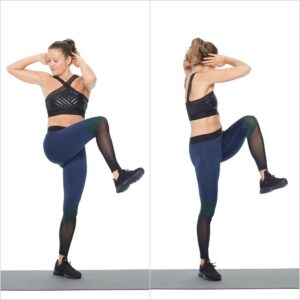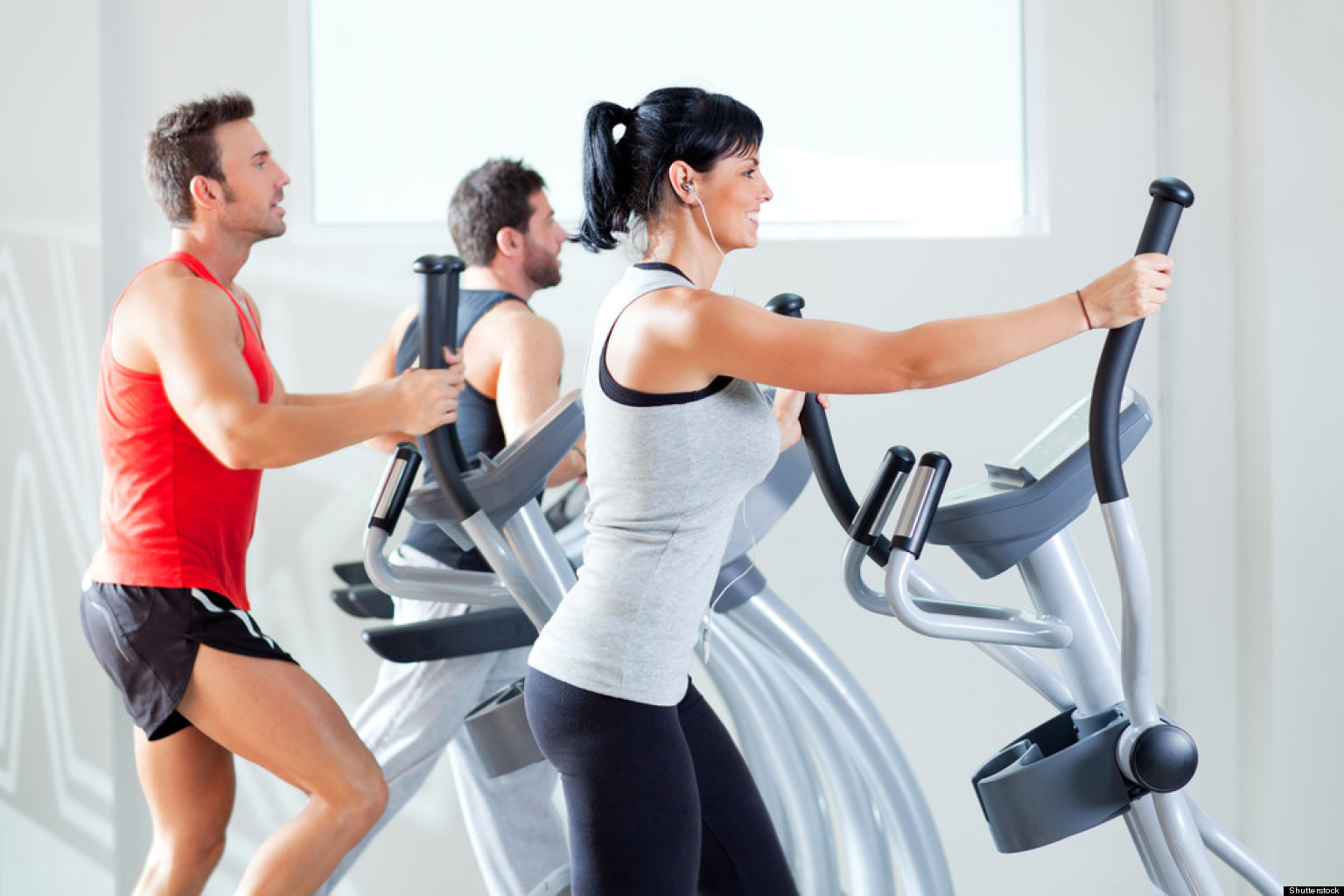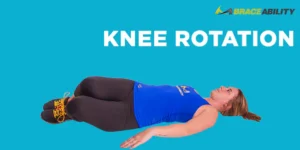Exercise
Strengthening, stretching, balance, and aerobic exercises will keep you active, mobile, and feeling great.
People do what they enjoy, or what feels the most effective, so some aspects of exercise and fitness may be ignored. Exercise is key to good health. But we tend to limit ourselves to one or two types of activity.
In reality, we should all be doing aerobics, stretching, strengthening, and balance exercises. Here, we list what you need to know about each exercise type and offer examples to try, with a doctor’s okay.
Strength Training
Strength training builds it back. As we age, lose muscle mass. Regular strength training will help you feel more confident and capable of daily tasks like carrying groceries, gardening, and lifting heavier objects around the house. Strength training will also help you stand up from a chair, get up off the floor, and go upstairs.
A physical therapist or certified personal trainer can design a strength training program that you can do two to three times a week at a gym, at home, or at work. It will likely include body weight exercises like squats, push-ups, and lunges, and exercises involving resistance from a weight, a band, or a weight machine.
It’s important to feel some muscle fatigue at the end of the exercise to make sure you are working or training the muscle group effectively.
Example:
Squat

Starting position: Stand with your feet shoulder-width apart, arms at your sides.
Movement: Slowly bend your hips and knees, lowering your buttocks about eight inches, as if you’re sitting back into a chair. Let your arms swing forward to help you balance. Keep your back straight. Slowly return to the starting position. Repeat 8-12 times.
Tips and techniques:
- Shift your weight into your heels.
- Squeeze your buttocks as you stand to help you balance.
Make it easier: Sit on the edge of a chair with your feet hip-width apart and arms crossed over your chest. Tighten your abdominal muscles and stand up. Slowly sit down with control.
Make it harder: Lower farther, but not past your thighs being parallel to the floor.
Balance Exercise
Many senior centers and gyms offer balance-focused exercise classes, such as tai chi or yoga. It’s never too early to start this type of exercise, even if you feel you don’t have balance problems. Improving your balance makes you feel steadier on your feet and helps prevent falls. It’s especially important as we get older, when the systems that help us maintain balance—our vision, our inner ear, and our leg muscles and joints—tend to break down. The good news is that training your balance can help prevent and reverse these losses.
Typical balance exercises include standing on one foot or walking heel to toe, with your eyes open or closed. The physical therapist may also have you focus on joint flexibility, walking on uneven surfaces, and strengthening leg muscles with exercises such as squats and leg lifts. Get the proper training before attempting any of these exercises at home.
Example:
Standing knee lift

Starting position: Stand up straight with your feet together and your hands on your hips.
Movement: Lift your left knee toward the ceiling as high as is comfortable or until your thigh is parallel to the floor. Hold, then slowly lower your knee to the starting position.
Repeat the exercise 3-5 times.
Then perform the exercise 3-5 times with your right leg.
Tips and techniques:
- Keep your chest lifted and your shoulders down and back.
- Lift your arms out to your sides to help you balance, if needed.
- Tighten your abdominal muscles throughout.
- Tighten the buttock of your standing leg for stability.
- Breathe comfortably.
Make it easier: Hold on to the back of a chair or counter with one hand.
Make it harder: Lower your leg all the way to the floor without touching it. Just as it is about to touch, lift your leg up again.
Stretching
Stretching helps maintain flexibility. We often overlook that in youth when our muscles are healthier. But aging leads to a loss of flexibility in the muscles and tendons. Muscles shorten and don’t function properly. That increases the risk for muscle cramps and pain, muscle damage, strains, joint pain, and falling, and it also makes it tough to get through daily activities, such as bending down to tie your shoes.
Aim for a program of stretching every day or at least three or four times per week.
Warm up your muscles first, with a few minutes of dynamic stretches—repetitive motion such as marching in place or arm circles. That gets blood and oxygen to muscles, and makes them amenable to change.
Then perform static stretches (holding a stretch position for up to 60 seconds) for the calves, the hamstrings, hip flexors, quadriceps, and the muscles of the shoulders, neck, and lower back.
However, don’t push a stretch into the painful range. That tightens the muscle and is counterproductive.
Example:
Single knee rotation
Starting position: Lie on your back with your legs extended on the floor.
Movement: Relax your shoulders against the floor. Bend your left knee and place your left foot on your right thigh just above the knee. Tighten your abdominal muscles, then grasp your left knee with your right hand and gently pull it across your body toward your right side.
Hold 10 to 30 seconds.
Return to the starting position and repeat on the other side.
Tips and techniques:
- Stretch to the point of mild tension, not pain.
- Try to keep both shoulders flat on the floor.
- To increase the stretch, look in the direction opposite to your knee.



Nice blog Dear keep up the good work
Thanks for sharing
Your articles are extremely helpful to me. Please provide more information!
Thanks I appreciates
What抯 Going down i am new to this, I stumbled upon this I have found It absolutely useful and it has helped me out loads. I am hoping to give a contribution & help other customers like its aided me. Good job.
Thanks I really appreciates
Thank you for your help and this post. It’s been great. http://www.ifashionstyles.com
Welcome always and any time
excellent submit, very informative. I wonder why the other experts of this sector do not notice this. You must proceed your writing. I am confident, you’ve a huge readers’ base already!
I am also writing to make you know of the remarkable encounter our princess enjoyed visiting your webblog. She even learned a good number of pieces, most notably how it is like to have a wonderful giving mood to make the mediocre ones clearly fully understand selected grueling subject matter. You truly did more than visitors’ desires. Thank you for coming up with such interesting, safe, informative and as well as easy thoughts on that topic to Jane.
Thank you for writing this post. I like the subject too. http://www.kayswell.com
May I request more information on the subject? http://www.ifashionstyles.com All of your articles are extremely useful to me. Thank you!
The subsequent time I learn a blog, I hope that it doesnt disappoint me as a lot as this one. I mean, I know it was my option to learn, however I actually thought youd have one thing interesting to say. All I hear is a bunch of whining about something that you would repair for those who werent too busy searching for attention.
The articles you write help me a lot and I like the topic http://www.ifashionstyles.com
Interesting post right here. One thing I would like to say is the fact most professional areas consider the Bachelor’s Degree as the entry level standard for an online course. Although Associate Certifications are a great way to start out, completing ones Bachelors starts up many entrance doors to various employment opportunities, there are numerous internet Bachelor Course Programs available through institutions like The University of Phoenix, Intercontinental University Online and Kaplan. Another issue is that many brick and mortar institutions give Online variants of their diplomas but often for a greatly higher cost than the providers that specialize in online qualification plans.